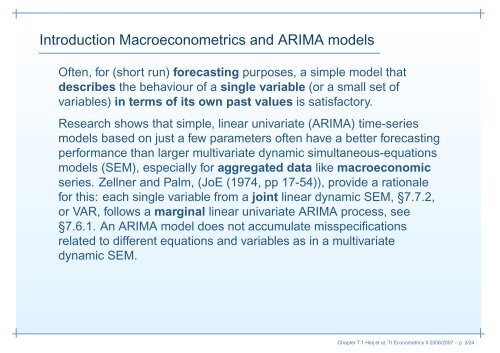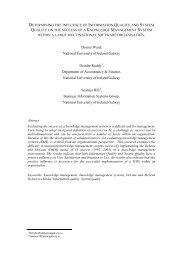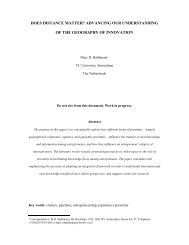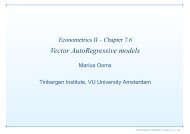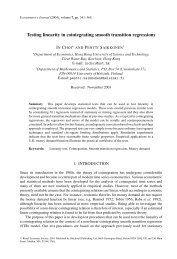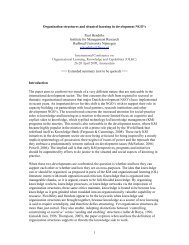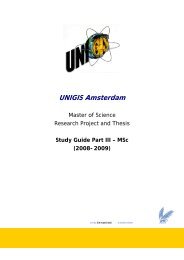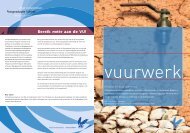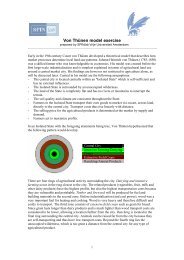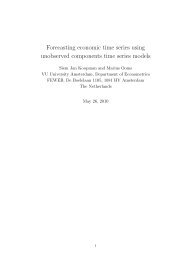Linear Time Series Models for Stationary data - Feweb
Linear Time Series Models for Stationary data - Feweb
Linear Time Series Models for Stationary data - Feweb
You also want an ePaper? Increase the reach of your titles
YUMPU automatically turns print PDFs into web optimized ePapers that Google loves.
Introduction Macroeconometrics and ARIMA models<br />
Often, <strong>for</strong> (short run) <strong>for</strong>ecasting purposes, a simple model that<br />
describes the behaviour of a single variable (or a small set of<br />
variables) in terms of its own past values is satisfactory.<br />
Research shows that simple, linear univariate (ARIMA) time-series<br />
models based on just a few parameters often have a better <strong>for</strong>ecasting<br />
per<strong>for</strong>mance than larger multivariate dynamic simultaneous-equations<br />
models (SEM), especially <strong>for</strong> aggregated <strong>data</strong> like macroeconomic<br />
series. Zellner and Palm, (JoE (1974, pp 17-54)), provide a rationale<br />
<strong>for</strong> this: each single variable from a joint linear dynamic SEM, §7.7.2,<br />
or VAR, follows a marginal linear univariate ARIMA process, see<br />
§7.6.1. An ARIMA model does not accumulate misspecifications<br />
related to different equations and variables as in a multivariate<br />
dynamic SEM.<br />
Chapter 7.1 Heij et al, TI Econometrics II 2006/2007 – p. 3/24


